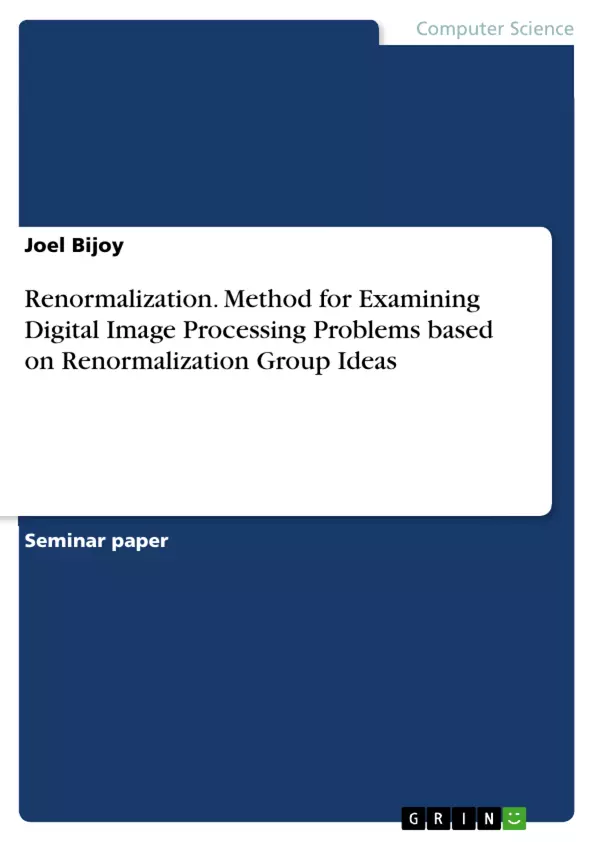This paper presents a method for Examining Digital Image Processing Problems based on Renormalization Group Ideas, Markov Random Field Modeling of Images, and Metropolis-Type Monte Carlo algorithm, pro. The method can be used effectively in combination and can be used in rehabilitation, drug control tissue, coding, movement analysis, etc. It provides integration to perform hierarchical, multi-scale, coarseto-fine analysis of functional images such as The technique was developed and used for the restoration of distorted images. Inverse algorithms are global optimization algorithms used for other optimization problems. It iteratively creates multilevel cascades of recovered images at different resolution or scale levels.
Image processing is hard work, especially when it comes to images with complex patterns such as textures or fractals. Traditional image processing techniques may not be sufficient to extract features from such images. However, the Renormalization Group (RG) method provides a hierarchical and systematic way to analyze images at different scales and extract their associated features. The purpose of this document is to provide an overview of the conversion suite for image processing and its applications.
Inhaltsverzeichnis (Table of Contents)
- 1. INTRODUCTION
- 2. LITERATURE REVIEW
- 3. PROPOSED METHOD
- 3.1. Multiscale Edge Detection Using Wavelet Transform:
- 3.2. Image noise reduction using the wavelet thresholding method:
- 3.2. Image compression using discrete cosine transform:
Zielsetzung und Themenschwerpunkte (Objectives and Key Themes)
This document provides an overview of the use of Renormalization Group (RG) ideas in image processing, outlining its application in various tasks like image segmentation, noise reduction, and enhancement.
- The application of Renormalization Group (RG) methods in image processing.
- RG as a tool for analyzing image models at different levels of detail.
- Exploring the capabilities of RG in various image processing applications such as segmentation, noise reduction, and enhancement.
- Highlighting the advantages of RG in providing a hierarchical and systematic approach for image analysis.
- Demonstrating how RG can complement other techniques like wavelets and phase processes to improve image processing performance.
Zusammenfassung der Kapitel (Chapter Summaries)
- 1. INTRODUCTION: This chapter introduces the concept of Renormalization Group (RG) and its application in image processing. It highlights the challenges of processing complex images with textures or fractals and presents RG as a solution for analyzing images at different scales.
- 2. LITERATURE REVIEW: This chapter provides a summary of key research studies investigating the use of RG in image processing. It discusses specific applications like pattern recognition, noise removal, and segmentation, with examples of studies that have utilized RG techniques.
- 3. PROPOSED METHOD: This chapter presents a proposed method for implementing RG in image processing. It discusses three specific applications: multiscale edge detection using wavelet transform, image noise reduction using wavelet thresholding, and image compression using discrete cosine transform. Each application is described step-by-step, providing practical insights into the method's implementation.
Schlüsselwörter (Keywords)
Renormalization Group (RG), Image Processing, Image Segmentation, Image Noise Reduction, Image Enhancement, Texture Analysis, Wavelet Transform, Discrete Cosine Transform, Multiscale Edge Detection, Wavelet Thresholding, Image Compression, Pattern Recognition.
- Quote paper
- Joel Bijoy (Author), 2024, Renormalization. Method for Examining Digital Image Processing Problems based on Renormalization Group Ideas, Munich, GRIN Verlag, https://www.hausarbeiten.de/document/1473129


